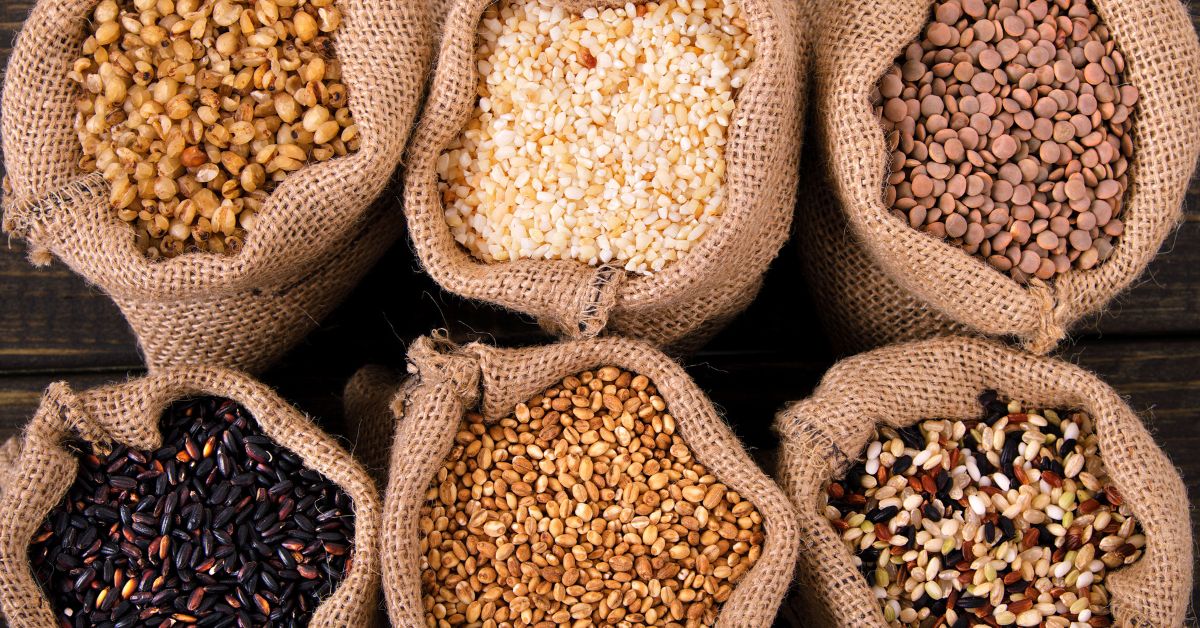

If there’s one thing the standard American diet (SAD) lacks, it’s fiber. Daily recommendations are set at 25 to 30 grams, but less than 3 percent of Americans consume that much.[1] In fact, most are getting an average of only 15 grams per day.[2] By contrast, among more than 71,000 subjects participating in the Adventist Health Study-2, those consuming a vegan diet (5,694 subjects) consumed an average of 46 grams of fiber daily.[3]
Fiber is essential for digestive wellness and performs other health-promoting functions, including binding and removing excess cholesterol from the body. Unfortunately, switching from a low-fiber SAD diet to a plant-based diet naturally high in fiber can cause some uncomfortable—and sometimes embarrassing—problems. In this article, we’ll look at why these problems arise and what can be done to minimize those problems while enjoying the most nutritious diet possible.
It takes a few days for your gut bacteria to shift to the species that feed on plant-based foods.
Getting to Know Your Fiber
Plant-based foods provide two kinds of fiber:
- Soluble fiber, found in foods like beans and fruit, dissolves in liquid and feeds beneficial gut bacteria.[4] It also pulls water into the stool, making it softer and easier to pass.
- Insoluble fiber doesn’t dissolve in water but serves to add bulk to stool and help you stay regular. This includes resistant starch, a variety of fiber associated with the feeling of satisfaction and fullness experienced after a nutritious plant-based meal.
Although both types of fiber promote digestive health, the paradox of plant-based diets is that increased fiber intake can make your digestion seem to get worse at first instead of better.
Beans, Brassicas, and Bloating
Switching from a SAD diet to a whole food, plant-based diet may mean more than doubling your fiber intake almost overnight. Some of the highest fiber foods in plant-based diets[5] may also be the worst offenders when it comes to digestive complaints during the transition:
- Beans contain resistant starch and cellulose fibers along with sugars like raffinose, galacto-oligosaccharides, and fructans.[6]
- Brassicas, commonly called cruciferous vegetables, are also sources of raffinose.[7]
- Fruit delivers a dose of natural fructose and sorbitol.
- All plant foods contain cellulose.[8]
When you start to consume these fibers and sugars for the first time or greatly increase your intake, your body may be unprepared to deal with the sudden change. It takes a few days for your gut bacteria to shift to the species that feed on plant-based foods, and when they do, they get busy fermenting compounds relatively alien to your body.[9]
The result? Some people experience digestive discomfort, bloating, or embarrassing flatulence, making them reluctant to continue on their plant-based journeys.
Dealing With Fiber Side Effects
Since all of the foods with the potential to cause fiber-related problems are big players in a plant-based diet, what can you do to minimize the risk of unpleasant side effects?
First, make sure you drink enough water. Remember that fiber pulls water into the stool, and this can increase your risk of dehydration and constipation if your overall fluid intake isn’t adequate. You can also drink herbal teas containing ginger, fennel, or mint. These soothe the digestive tract in addition to providing more liquid.
Eat more cooked foods than raw as you transition to a plant-based lifestyle. Add high-fiber foods slowly, working up to bigger portions over time.[10] If you experience bloating or gas after large meals, try eating smaller amounts more frequently until your digestive system gets used to the increase in fiber. Tracking your intake with a diet and lifestyle app can help you visualize how much fiber you’re eating per day.
Be sure you’re including enough healthy fat in your meals.[11] You don’t have to eat large amounts,[12] but adding ground flax to oatmeal, some avocado to bean chili, or a sprinkle of seeds to your salad can ease problems associated with increased fiber intake.
Some people benefit from taking digestive enzymes or probiotics when switching to a diet of whole plant foods. Consult a digestive specialist or wellness professional with experience choosing these products to find the best combination for you.
One other trick you can use to relieve uncomfortable bloating right away is a yoga pose known as “wind relieving pose.”[13] This pose compresses your abdomen and helps eliminate trapped air. As strange as it may sound, it does work!
Too Much Fiber?
In some cases, increased fiber intake causes more serious problems than simple social awkwardness. Signs you’re overdoing it on fiber include:
- Constipation
- Diarrhea
- Cramping
- Dehydration
- Persistent, uncomfortable bloating
Rarely, excessive fiber intake may cause an intestinal blockage,[14] and some evidence suggests a minimal risk of losing nutrients to which fiber binds, including calcium, magnesium, iron, and zinc.[15] However, at the levels provided by a typical plant-based diet, fiber shouldn’t cause any of these complications.
If Problems Persist…
Taking steps to minimize digestive troubles during your plant-based transition should ease your discomfort, but if it doesn’t, you should talk with your doctor or another trusted medical profesional. Persistent bloating, flatulence, nausea, or diarrhea could be an indication of other health issues:
- Food allergy or intolerance
- Leaky gut syndrome
- Imbalanced gut bacteria
- IBS or IBD
- Bacterial overgrowth
Addressing these underlying issues will allow you to enjoy nutritious meals without feeling uncomfortable or ill.
A growing body of research demonstrates a plant-based diet is best for health, so don’t let temporary discomfort from increased fiber make you shy away from making the switch. By planning your transition so that your fiber intake increases slowly, you can enjoy the benefits of plant-based eating without digestive distress.
References
- https://www.ucsfhealth.org/education/increasing_fiber_intake/
- https://academic.oup.com/jn/article/142/7/1390S/4630933
- https://veganhealth.org/average-nutrient-intakes-of-vegans/
- https://kriscarr.com/blog/tips-to-live-in-harmony-with-high-fiber-foods/
- https://www.vegkitchen.com/34-best-plant-based-high-fiber-foods/
- https://www.huffingtonpost.com.au/2016/06/02/why-beans-make-you-fart_a_21387962/
- https://www.health.com/health/gallery/0,,20802995,00.html#worst-legumes-0
- https://www.iffgd.org/symptoms-causes/intestinal-gas/foods-that-may-cause-gas.html
- https://nutritionfacts.org/video/how-to-change-your-enterotype/
- https://www.vegkitchen.com/fiber-plant-based-diets/
- https://happyhappyvegan.com/vegan-constipation/
- https://www.onegreenplanet.org/natural-health/how-to-deal-with-digestive-difficulties-on-a-plant-based-diet/
- https://www.yogaoutlet.com/guides/how-to-do-wind-relieving-pose-in-yoga
- https://www.nutritionadvance.com/too-much-fiber/
- https://www.fitday.com/fitness-articles/nutrition/healthy-eating/6-health-risks-of-eating-too-much-fiber.html
Copyright 2025 Center for Nutrition Studies. All rights reserved.
Deepen Your Knowledge With Our
Plant-Based Nutrition
Certificate
Plant-Based Nutrition Certificate
- 23,000+ students
- 100% online, learn at your own pace
- No prerequisites
- Continuing education credits





